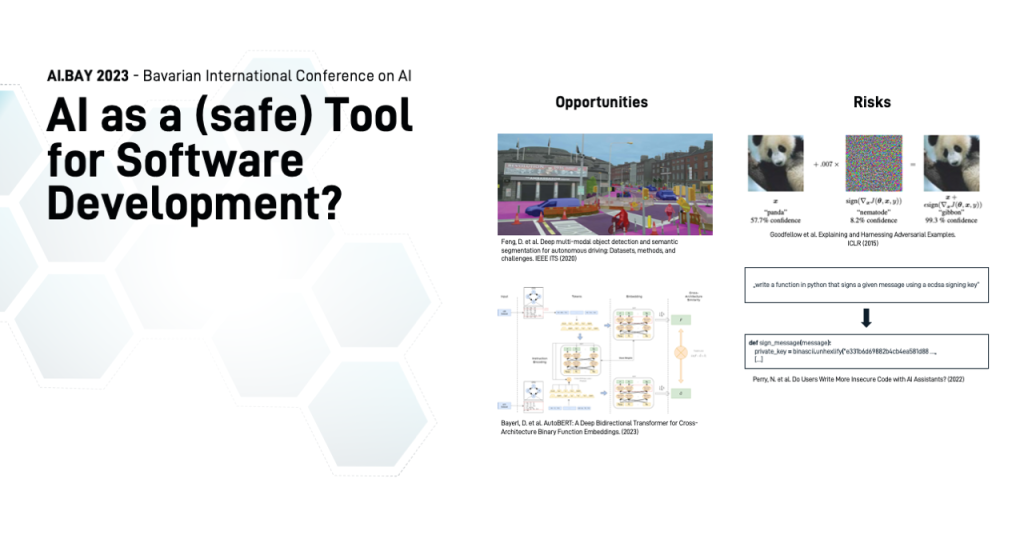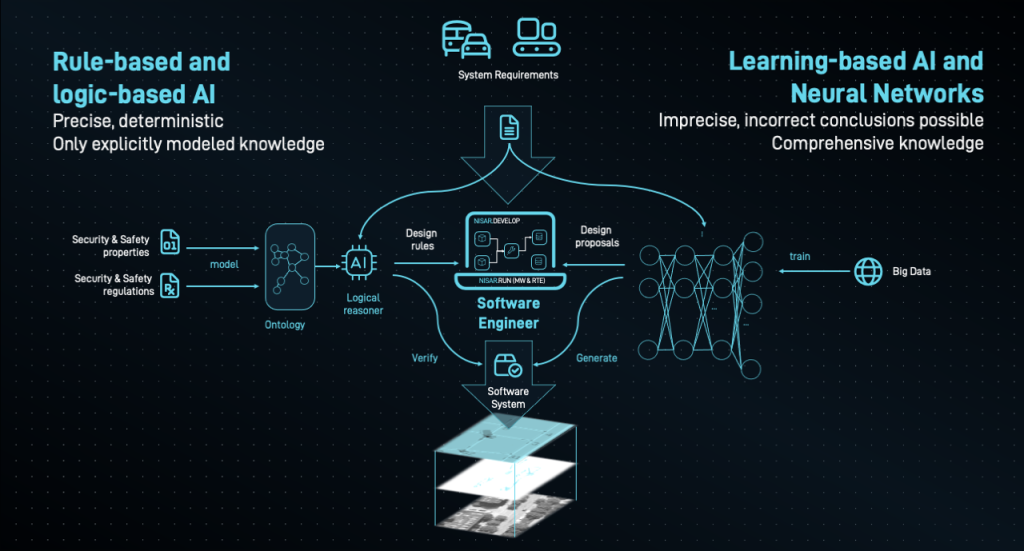
When we talk about AI today, we often talk about:
- AI as a driver assistance system (NVIDIA DRIVE, TESLA Autopilot)
- AI for controlling robots (Deep Reinforcement Learning)
- AI for creating images (Stable Diffusion, Dall-E)
- AI for recognizing disease patterns or guiding surgeons
-> AI is (part of) the product here
One aspect of AI is considered much less frequently, but had recently celebrated major breakthroughs:
-> AI as a tool for creating products
This is equally important, but less often discussed. In former times it was less popular and surely with less public and media impact. But it is at least as important for the development and competitiveness of the industry. We are facing the next big revolution after digitization.
At the startup NISAR, we deal with the topic of “AI in Software Engineering”: simplifying the development of intelligent and safety-relevant systems; in the automotive, robotics and automation sectors.
It is here that the difference between different types of AI comes into play:
- Rule-based AI systems are able to deterministically and with high precision derive rules for concrete applications from regulations and standards design, for example. This is of great advantage in the security-relevant parts of a software system.
- Neural networks and deep learning, on the other hand, can represent much larger amounts of knowledge to thus generate more comprehensive design proposals, up to and including the automated generation of code.

The goal must be to make all types of AI profitably available to industry – each in its area of application. Or in hybrid AI systems combining both approaches to embolden their strengths while mitigating their weaknesses.
The potential of AI in software and system development is immense: functions and (safety) requirements in the automotive sector are becoming ever more extensive, and an engineer reaches his limits here due to the volume. At the same time, the capabilities of AI to solve such complex issues are increasing.
Those who integrate these current groundbreaking advances into their development processes will benefit, the rest will fall behind.
The easy availability of massive pretrained foundation models via API or open source completely changes what it looks like to develop an AI product.
Forbes/Rob Toews, Radical Ventures

